Sendra Granite- A Geotourism Site in Central Rajasthan
- In Travel
- 01:19 PM, Sep 07, 2017
- Rakesh Giri Goswami
CONCEPT: - Lot of information about concepts and definitions of this word are available in scientific literature.
As per published scientific literature Geo tourism was first defined (Hose, 1995) in England. There are two viewpoints of geo tourism. Purely geological and geomorphologically- focused sustainable tourism as abiotic nature based tourism. This is the definition followed in most of the world. Geo tourism adds to the Eco tourism as another dimension as you also study geological features along with fauna and flora in any particular region.
Geographically Sustainable Tourism, is the most common definition in the USA. This emphasises preservation of the geographical sense of a place in general, beyond simple geological and geomorphological features, as a new charter & concept in the sustainable tourism. The relatively new concept of Geo tourism is attracting increasing interest around the world. Although the term has been in use informally since 1997, the 2002 Geo tourism Study, sponsored by National Geographic Traveller magazine and conducted by the Travel Industry Association of America, constituted its public debut.
The International Congress of Geo tourism, under the auspices of UNESCO, took place in the Arouca Geopark (Portugal) from 9 to 13 November 2011. After due deliberations National Geographic Society presented the Arouca Declaration, which established the following:
1. We recognize that there is a need to clarify the concept of Geo tourism. We therefore believe that Geo tourism should be defined as tourism which sustains and enhances the identity of a territory, taking into consideration its geology, environment, culture, aesthetics, heritage and the well-being of its residents. Geological tourism is one of the multiple components of Geo tourism.
2. Geological tourism is a basic tool for the conservation, dissemination and cherishing of the history of Life on Earth, including its dynamics and mechanisms. It enables visitors to understand a past of 4600 million years so as to view the present from another perspective and project possible shared futures for the Earth and humankind.
3. Appreciation of geological heritage should try to break new ground and prioritise the use of new technology over the use of traditional information posters.
4. Knowledge and information about geological heritage is often not presented a way that is easily understood by the general public. As a rule, this information comes in the style of scientific treatises which, besides using highly specialised language, leave visitors in the dark and limit touristic impact. Information must be accessible and intelligible for the general public, presented in a few basic concepts and with clarity, resulting in the combined efforts of scientists, interpretation experts and designers.
5. We thus believe the time has come to resurrect the basic principles of interpretation proposed in 1957 by Freeman Tilden and apply them to geological heritage: - Any presentation of geological heritage that does not somehow relate to something in the personal experience of the visitor will be sterile; - Information is not interpretation. Interpretation is revelation based on information.
The two things are entirely different, but all interpretation includes information; - The interpretation of a natural space must provoke and arouse curiosity and emotion much more than teaching.
Indian perspective:-Based on these basic principles every country has identified unique geological areas as sites for Geotourism. For laymen this concept means certain unique areas whose characters are area specific and not to be found in vicinity or nearby locations. In India this work is in the exclusive domain of central agency Geological Survey of India (GSI). This is one of the oldest scientific organization in the entire world. It has made outstanding contributions to the understanding of Geology of South Asia and its resources since 1851. For last 40 years they have identified many areas in different parts of country suitable for such tourism. Most of these areas have been studied in detail by Geological Survey of India. They have also included areas investigated by other agencies. Geological Survey of India has declared Sendra area as Geoheritage site. This author as geologist have studied many areas of geological interests in Rajasthan state. And presenting information on one such site in central Rajasthan which can boost tourism.
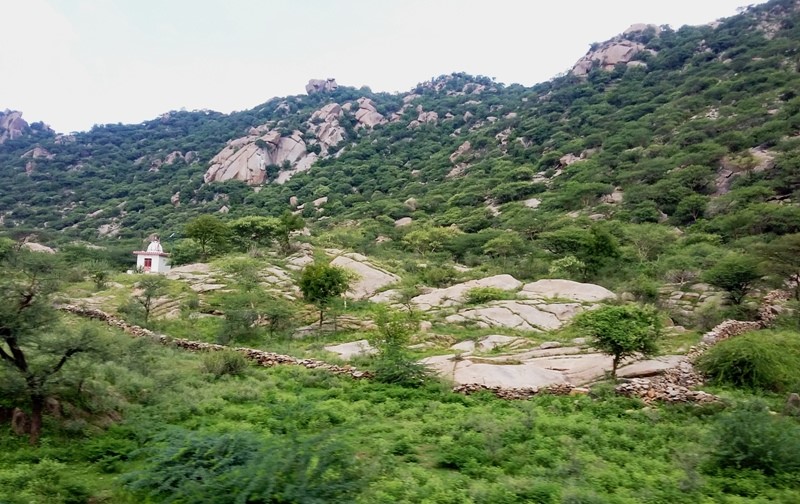
Sendra Granite: - This term represents spread of Pre Cambrian granite group designated in geological literature as Syn Orogenic Amba ji Granite there by making it one of the oldest such unit in geology of Rajasthan. All the varieties of granite outcrops are present here, e.g. hills, hillocks, boulders, sheet rocks. Apart from these physical attributes the structural and weathering features are also exhibited in form of joints, cracks, pot holes. The effects of wind and water erosion has converted part of granite in animal like forms like Owl rock, Lion rock. This area is outside the boundary of desert so also has lot of plantation and greenery. And is ideal site for geology and other science students, environment-nature lovers and general enthusiasts who love outdoors. Sendra granite is an igneous batholiths, covering roughly 11kms X 5kms area where granite out crops are available for study. General trend is NE-SW. This area includes villages like Sendra, Shergarh, Chitar, Amarpura, Lalpura, Chang and Khera Sagrotan.
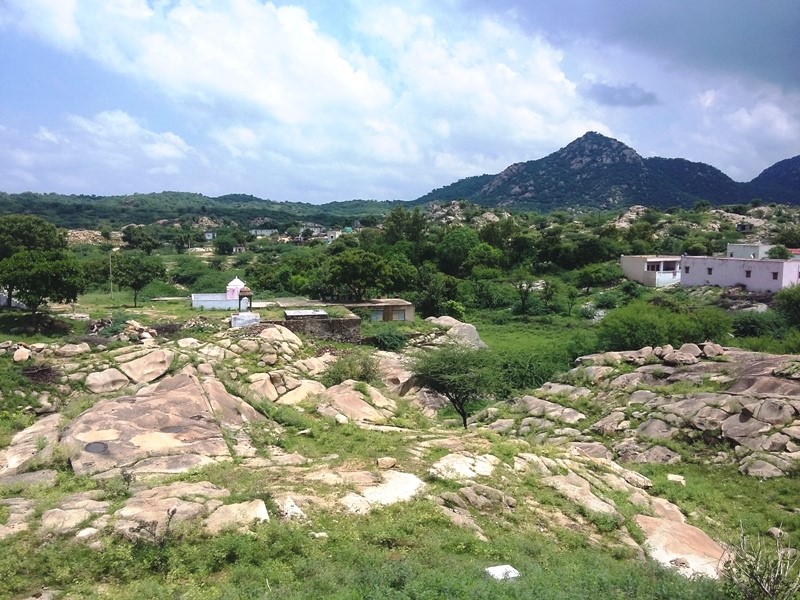
Location and Approach: - It is located in Pali district lying in central part of Rajasthan state in NW India. But very near to Ajmer district boundary, nearest town is Beawar which is 15kms away. This area is approachable round the year by train and rail. The Jaipur –Ahmedabad broad gauge rail line passes along the centre of this area. Trains halt at Sendra station, one can also alight at Bar station which is 10kms from Sendra. The 4 lane Pindwara-Ajmer national high way no. 25 via Beawar is also passing through the centre of this granite area. As a matter of fact the granite outcrops are occurring along both left and right side of train as well as road routes. Sendra area is 135kms. from Jodhpur in NE direction. It is 195kms. From Jaipur in SW direction. Both Jaipur and Jodhpur are having good air connectivity. Geological out crops can be studies along roadside, one needs vehicle for going in to interior villages, Jeep taxis are available.
Time to visit: - best time is from September to March, but one can also go in rainy season as you get better view of greenery and some small water falls. Woollens are required during winter months. Entry to these granite areas is free of cost.
Other infra: - The entire 4 lane route has many roadside eateries offering food, cold and hot drinks, snacks. All the villages mentioned above also have small restaurants where eatables are available.
Precautions: - As mentioned above granite occurs along both sides of road. The part of area located to the left of road covering Chitar, Amarpura, and Chang is covered under forest. Though it is not dense or thick forest but it is advisable to inform forest people before going inside. Because in this
.
particular area is also habitat of 2 Leopards. So always go in groups. Though these animals are not man eaters but it is necessary to take precautions.
PICTURES BY RAKESH GIRI GOSWAMI AND MAJU LATA GOSWAMI
Location Map of Sendra
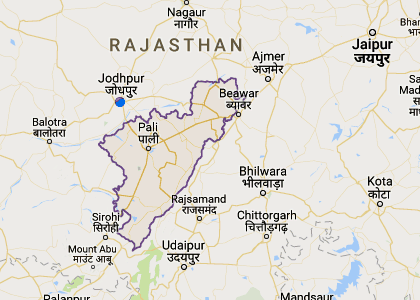
Location Map of Sendra Granite from Google Earth.
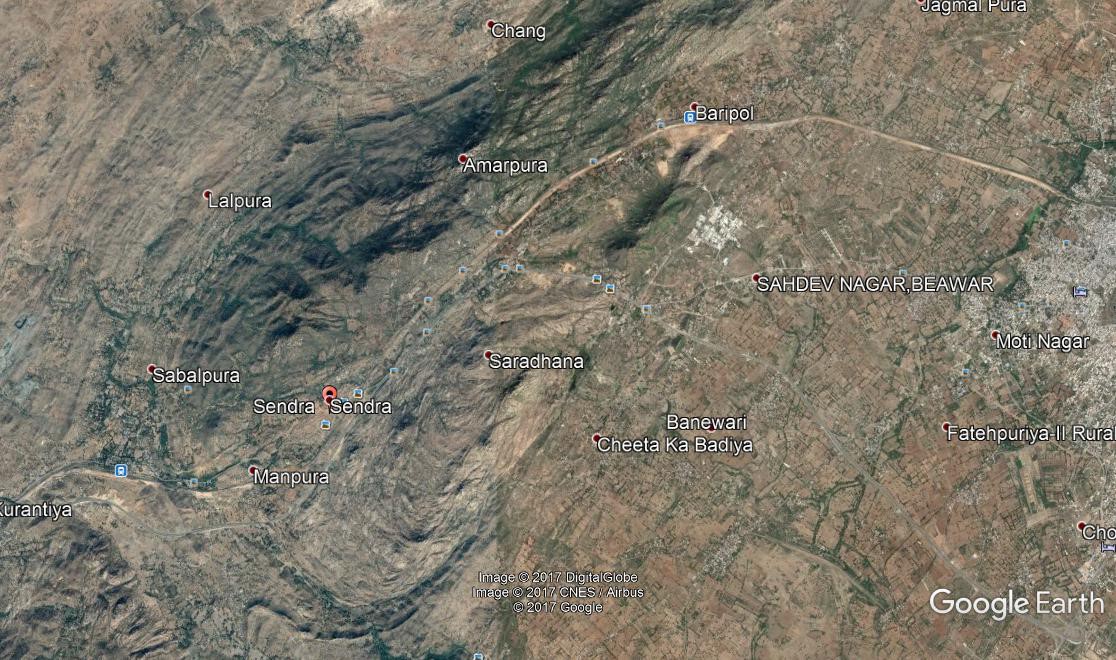
Pictures of Sendra Granite Area shot in July,2017
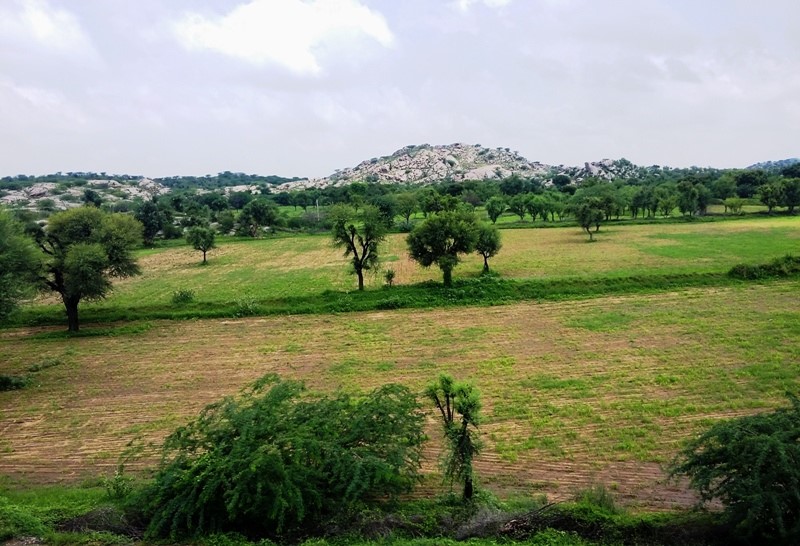
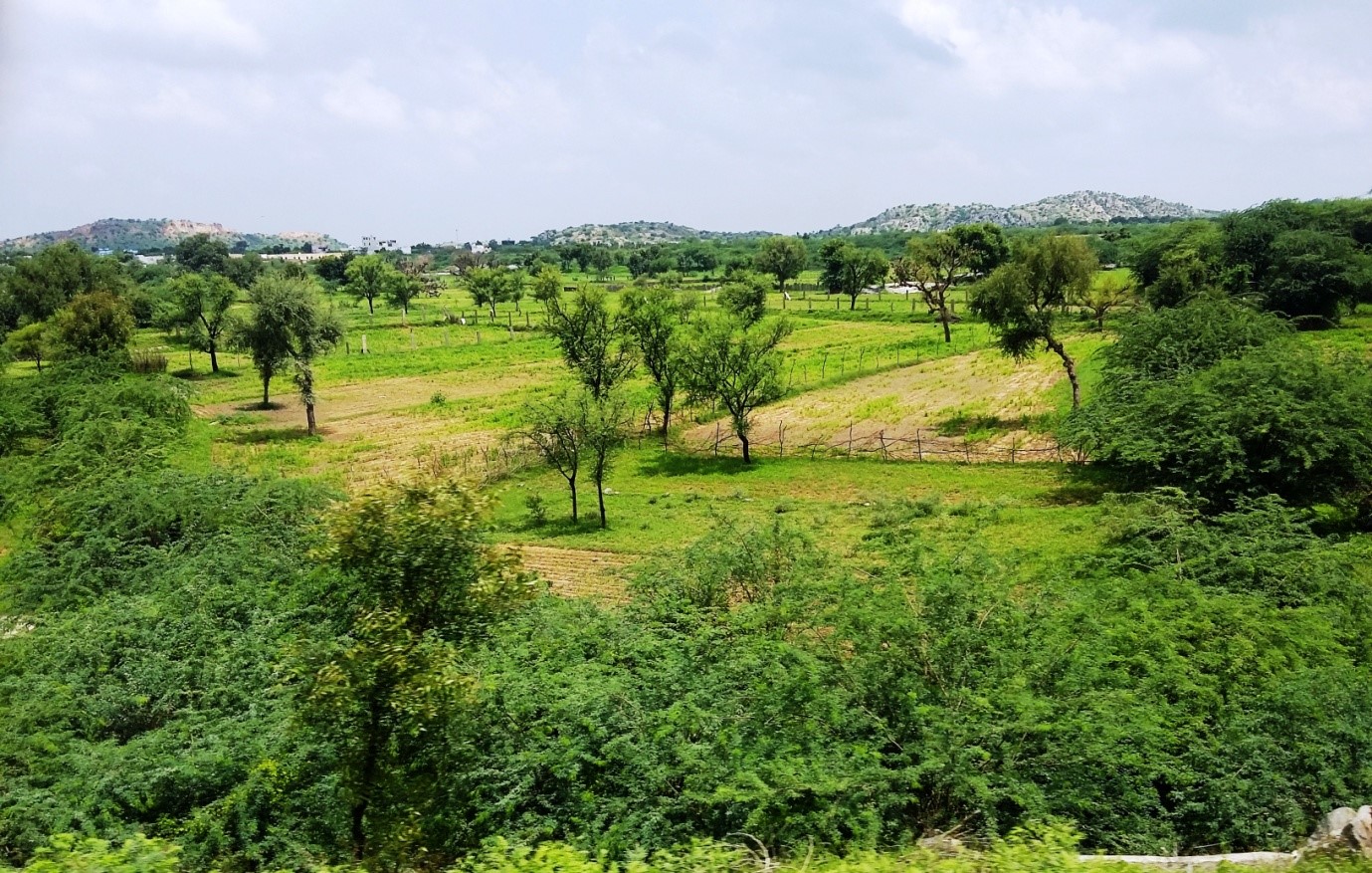

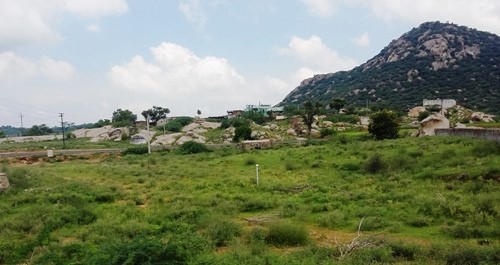
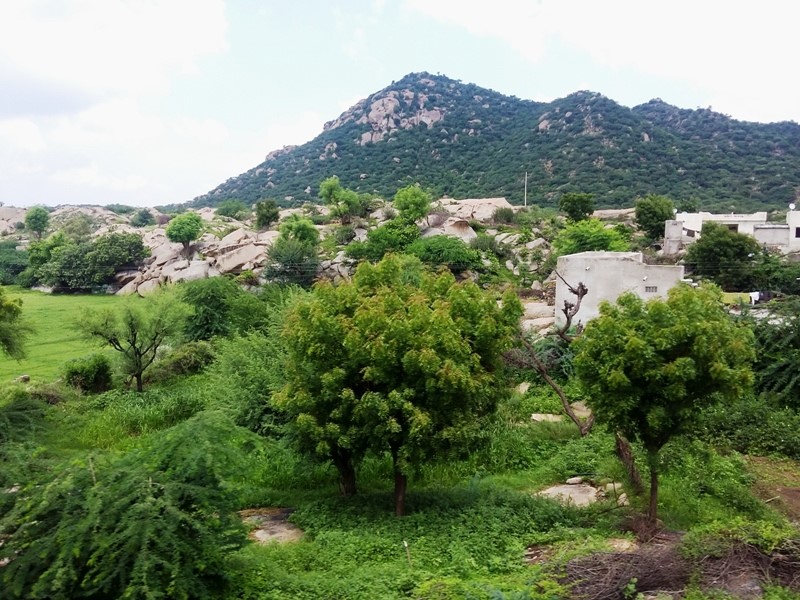
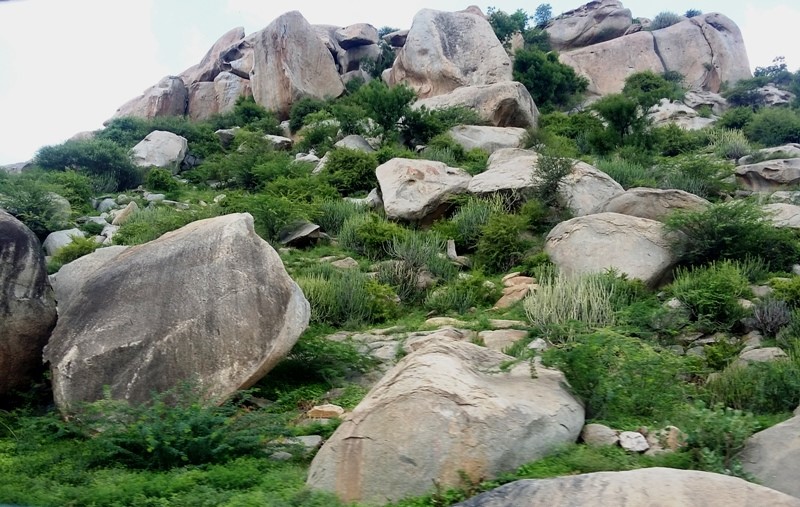
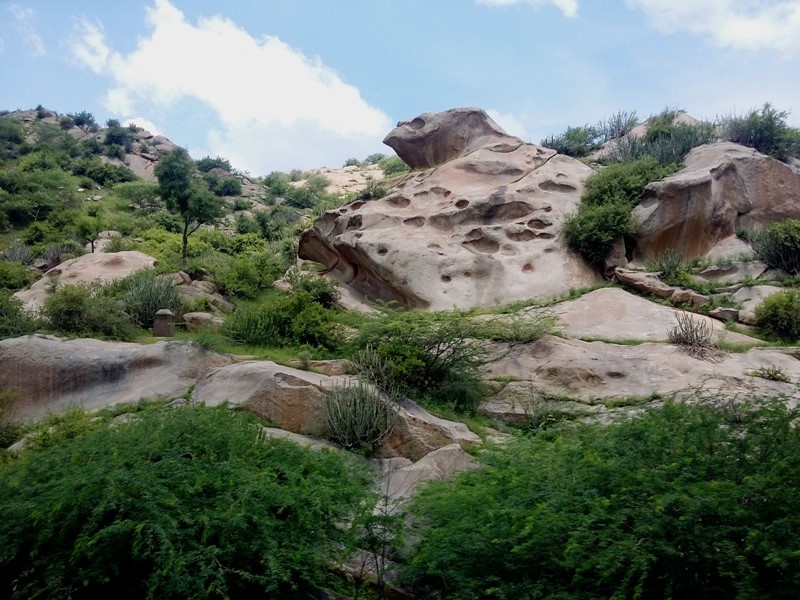
Erosion has given the shape of lion to granite rock, pot hole also visible
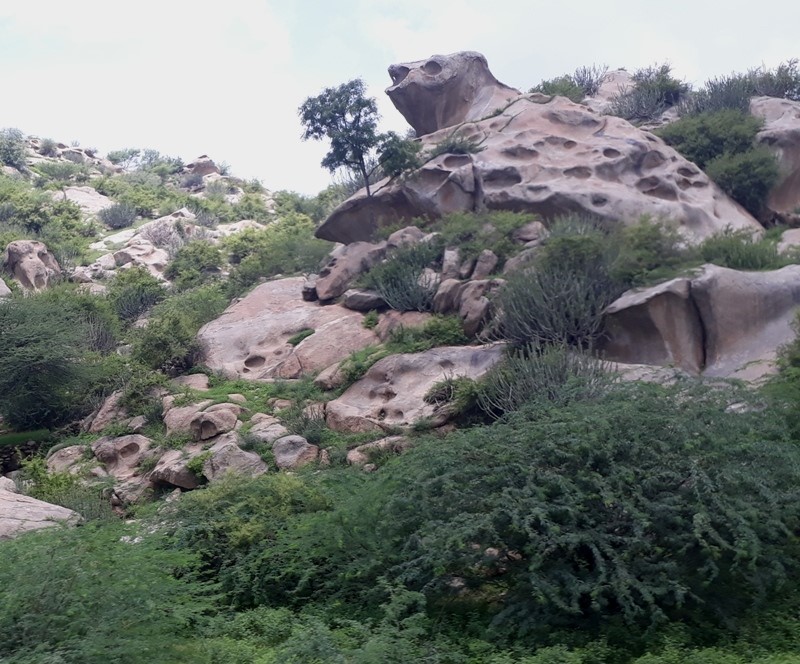
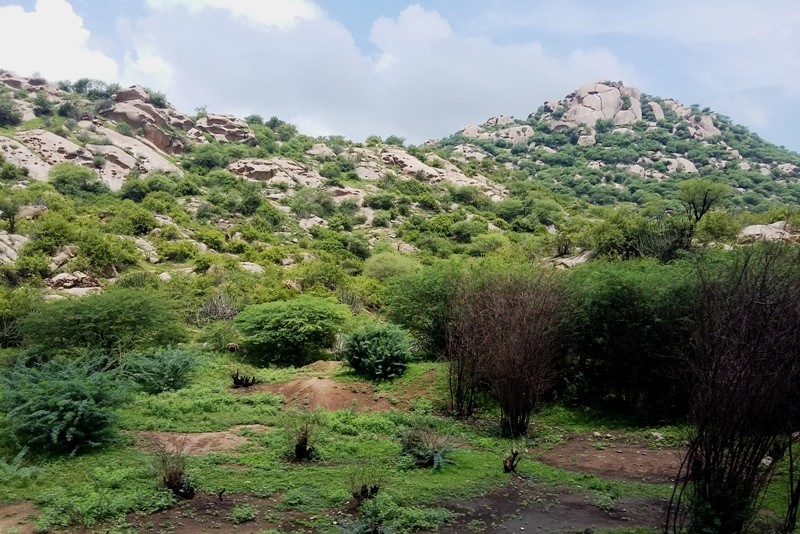
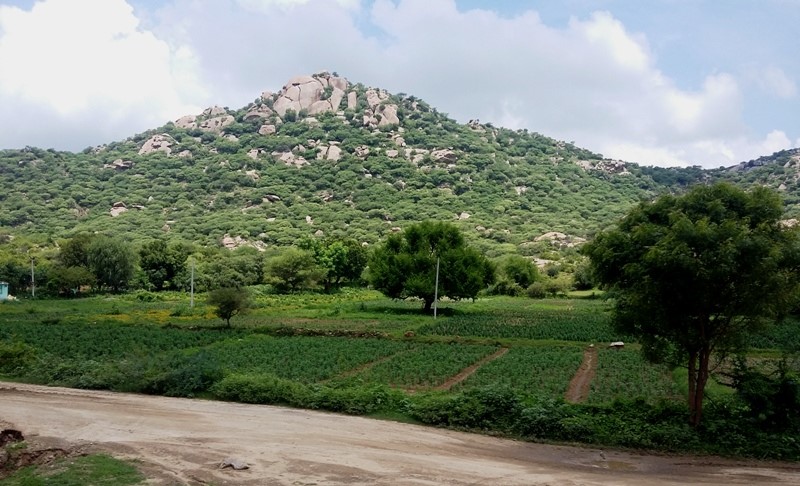







Comments